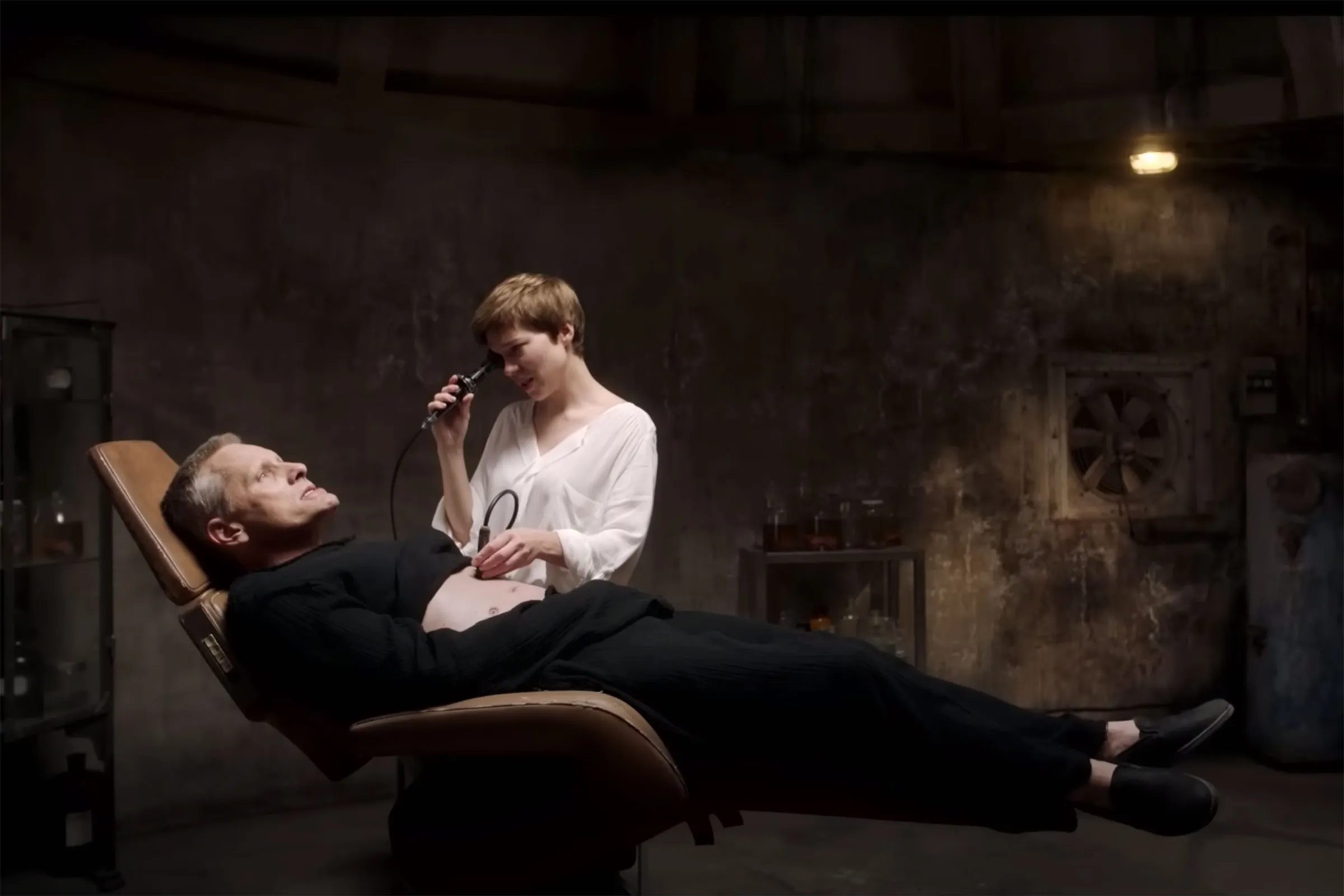There are many indelible images in David Cronenberg’s Crimes of the Future but none so tortuous as Viggo Mortensen’s performance artist, Saul Tenser, contorted on a feeding chair grown from bone and gristle. Saul has difficulty digesting his food and the chair forcefully manipulates his body into painful angles to allow him to eat. Squint and we could be taken back to Mortensen’s bit part in Carlito’s Way as the paralysed mobster Lalin, twitchy and desperate, but Saul embraces his agony as he is fed by his infernal contraption. We’re watching a mirror image of our own discomfort, writhing and squirming in our cinema seats like Saul, because even in his twilight years, few directors can make an audience suffer on the rack like David Cronenberg can.
Cronenberg’s fourth collaboration with Mortensen retains his deepest obsessions. In the introduction to Cronenberg on Cronenberg Chris Rodley articulates these as “medical science’s misunderstood endeavours to assist the evolutionary process; the body’s capacity to respond independently with transformation, mutation and its own creative diseases; descent into familial, societal or bodily chaos”. In the world of Crimes of the Future pollution and climate change have not only resulted in organic technology that can bond directly with the human body but the eradication of physical pain and infectious diseases in most humans.
Saul Tenser has “accelerated evolution syndrome,” a disorder that allows him to grow new vestigial organs and with the help of Caprice a former trauma surgeon (Léa Seydoux at her inscrutable best), he has them removed before live audiences who watch and record through old analogue devices, devoid of emotion or seemingly immune from the grisly spectacle. There may have been walkouts at Cannes, but Douglas Koch’s restrained cinematography keeps the audience at arm’s length so that the horror is replaced with morbid fascination and a growing sense of desensitization akin to the evolutionary absence of pain in Saul and his fellow artists.
With the current glut of content available via streaming services or social media the audience has no time to absorb, digest and appreciate the art in front of them before they are served more
Without the ability to feel pain, to feel anything, art is either homogenised or taken to extremity. In one scene, a contemporary dancer has his eyes and mouth sewn shut to accentuate the multitude of ears grown all over his body, “it is time to stop seeing, time to stop speaking, it is time to listen” drones the announcer. The irony is these ears are just for show, as organs they do not function. With the current glut of content available via streaming services or social media the audience has no time to absorb, digest and appreciate the art in front of them before they are served more. The removal of pain has nullified content anxiety but has detached mankind from our humanity. When Caprice rummages inside Saul’s internal organs is she searching for his soul; is that why Saul experiences orgasmic ecstasy the deeper she probes?
Only when Saul and Caprice are asked to perform an autopsy on an eight-year-old boy by his grieving father do they question the boundaries of taste and the limits of their own artistic intent. Afterall, if their extreme art is about consent, what consent do they have from a dead boy? Does the father have the right to consent for him? Ultimately their magnus opus is too tempting to turn down and consent is just another word. As Caprice says in their introduction to the autopsy, “But for tonight, let us not be afraid to map the chaos inside. Let us create a map that will guide us into the heart of darkness.”
Are we tricked into being part of the performance? Part of this Theatre of Cruelty? At points Mortensen’s Saul Tenser looks like Stephen Berkoff, grey haired, resplendent in a black smock using Berkoffian techniques, that stylised movement, exaggerated facial expressions, and repetitive movements. By the very act of watching Crimes of the Future we are complicit in accepting this grotesque procedure as art protected by the barrier of the screen that then separates us from our feelings. In that way we are no better than Saul and Caprice’s audience, who are emotionally distanced via their own recording and viewing devices.

